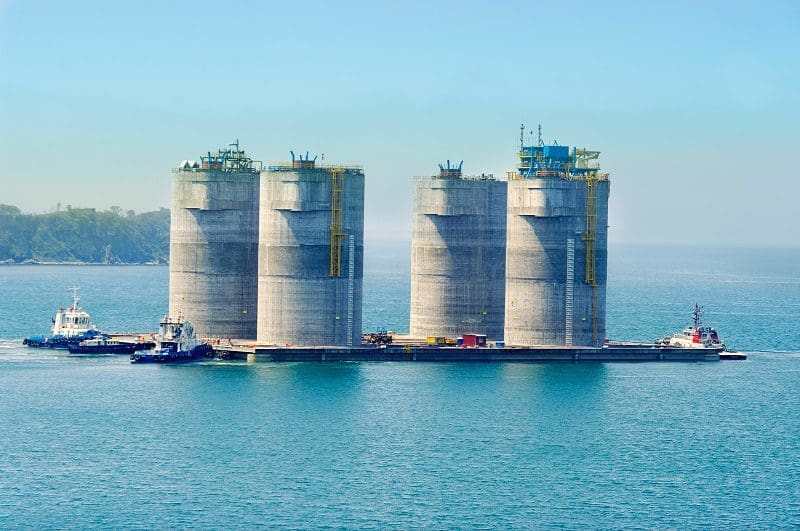Regardless of the current impetus toward “greener” energy, it remains a fact that society is heavily dependent on the oil and gas industry and will likely remain so in the near future. This does not mean nothing can be done to improve the sustainability of existing oil and gas infrastructure. One great strategy for doing so is to extend the service life of reinforced concrete structures using Cortec® Migrating Corrosion Inhibitors (MCI®).
Taking Concrete From Grey to Green™
MCI® Technology extends concrete service life by mitigating corrosion on embedded reinforcing metal. Corrosion is one of the chief enemies of concrete longevity because it leads to cracking, spalling, and eventual deterioration of the structure. Since concrete production is such an energy intensive activity, helping concrete last longer is an important part of a sustainability-savvy and resource-efficient society. The less often that concrete repairs or replacements have to be made, the more resources are saved, and the smaller the concrete carbon footprint becomes.
Vulnerable Oil & Gas Structures
There are many different concrete structures to consider in the oil and gas industry, with some at greater risk for corrosion than others. For example, many oil and gas terminals are located in coastal environments or harsh regions of the Middle East where airborne chlorides, heat, humidity, or even soil minerals can be highly corrosive. Many fixed or floating offshore platforms, terminals, foundations, and caissons are also made of reinforced concrete exposed directly to high-chloride seawater. These factors can seriously decrease the service life of concrete structures if special measures are not taken to counteract corrosion. Among these measures, a high-performance concrete design mix, preventative maintenance, and quality repairs are of utmost importance.
When to Use MCI®
The best time to apply Migrating Corrosion Inhibitors is when pouring new cast-in-place structures or precast concrete elements. MCI® admixtures introduce amine carboxylates to the concrete mix without negatively impacting physical properties. MCI® molecules form a protective layer on the surface of the reinforcing metal that delays time to corrosion and reduces corrosion rates once started. Existing structures can benefit from corrosion protection as well. A rust-converting/passivating metal primer is an excellent option for prepping exposed rusted rebar during concrete repairs. MCI® surface applied corrosion inhibitors (SACI) with or without water repellents are excellent additions to enhance the lifetime of the repair or to apply simply for periodic maintenance on oil and gas structures. These SACIs migrate through the concrete pores to reach and protect embedded reinforcement. In underwater environments, these SACIs should be covered with a waterproofing membrane. For surfaces in need of repair where oil stains are present, a biological-based cleaner that uses biodegradable surfactants and microorganisms to remove oil stains is an excellent choice before the application of a SACI, a coating, or a membrane system.
Take Responsibility for Critical Resource Stewardship
The oil and gas industry is part of today’s existing critical infrastructure that demands responsible stewardship. By taking basic steps like using MCI® Technology to extend service life—particularly for at-risk structures in corrosive environments—the oil and gas industry can save time and money while indirectly reducing their carbon footprint. Contact Cortec® for further assistance in finding ways to enhance the sustainability of concrete oil and gas industry structures: https://www.cortecmci.com/contact-us/
Special thanks to Ash Hasania (MCI® Technical Sales & Market Manager) and Lisa Marston (Technical Service Engineer) for their support as MCI® subject matter experts.
Adobe Stock image courtesy of Cortec®.
Julie Holmquist is the Marketing Content Writer at Cortec Corporation. She has served in this role for close to seven years and has written on a variety of corrosion related topics from concrete longevity to electronics protection. Email: jholmquist@cortecvci.com.
Oil and gas operations are commonly found in remote locations far from company headquarters. Now, it's possible to monitor pump operations, collate and analyze seismic data, and track employees around the world from almost anywhere. Whether employees are in the office or in the field, the internet and related applications enable a greater multidirectional flow of information – and control – than ever before.




